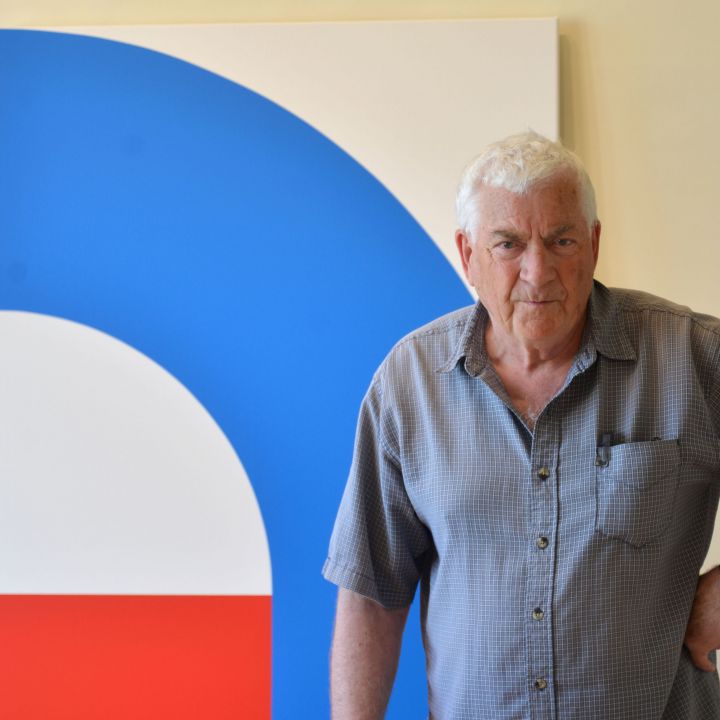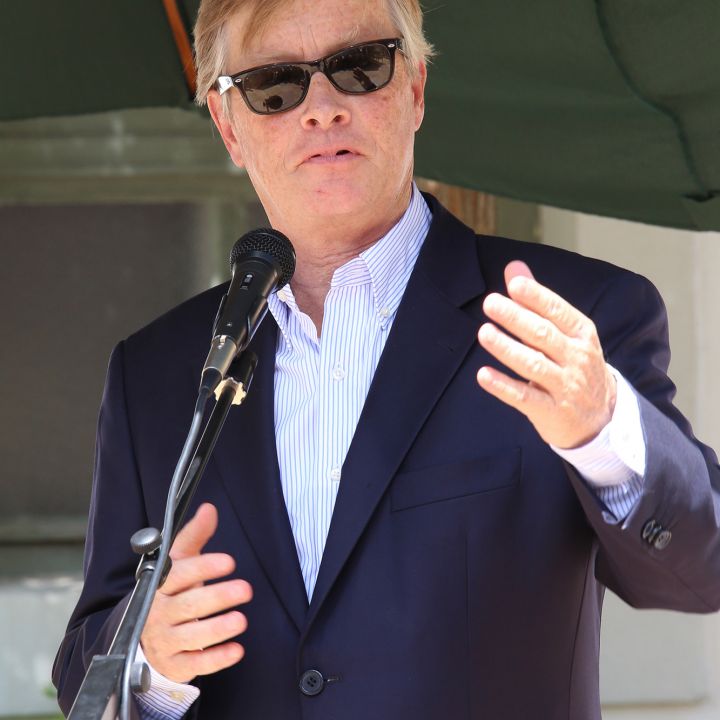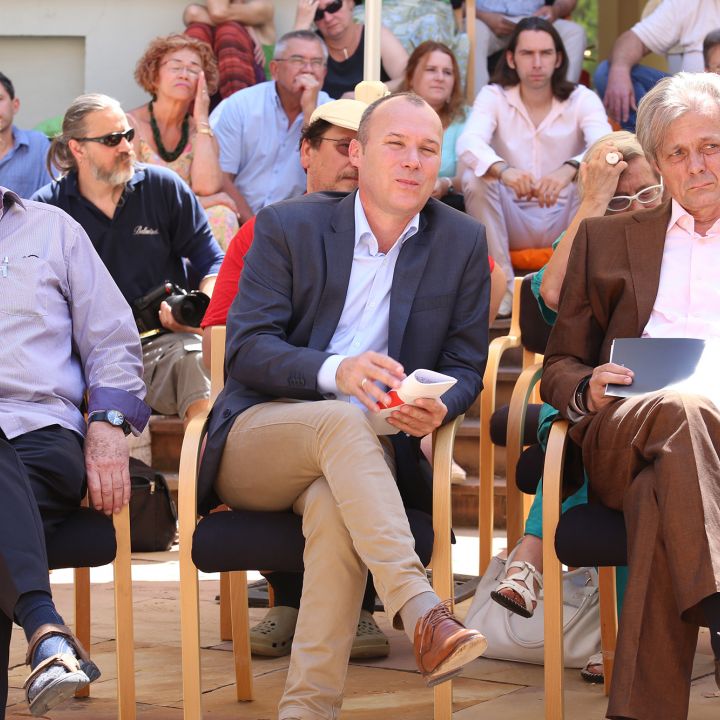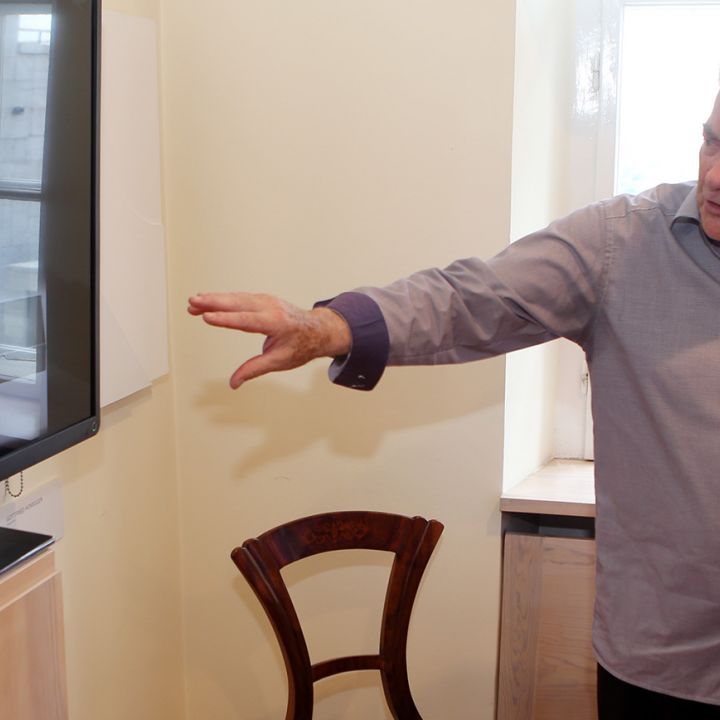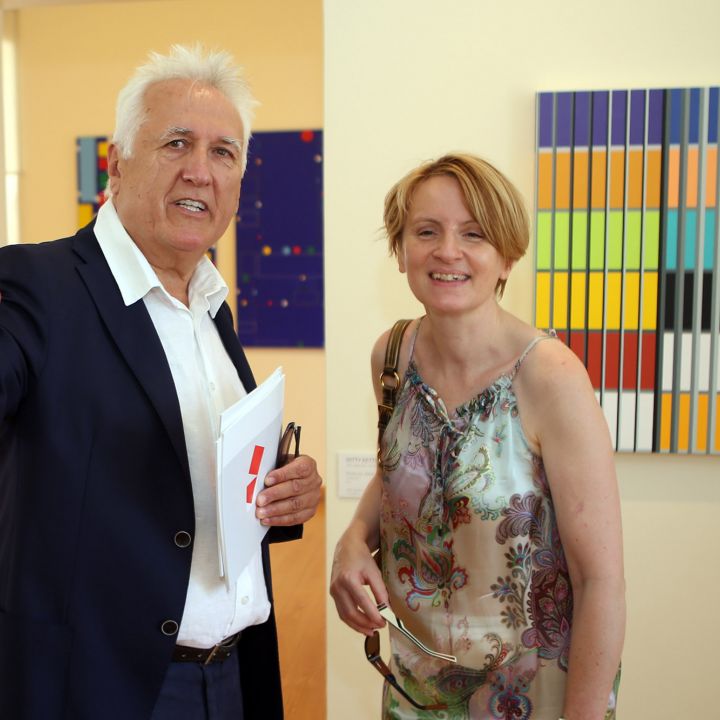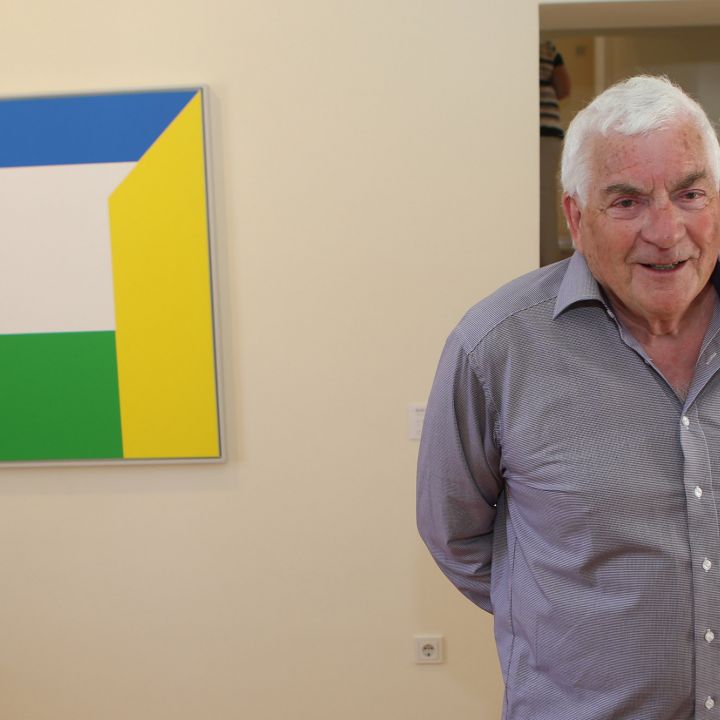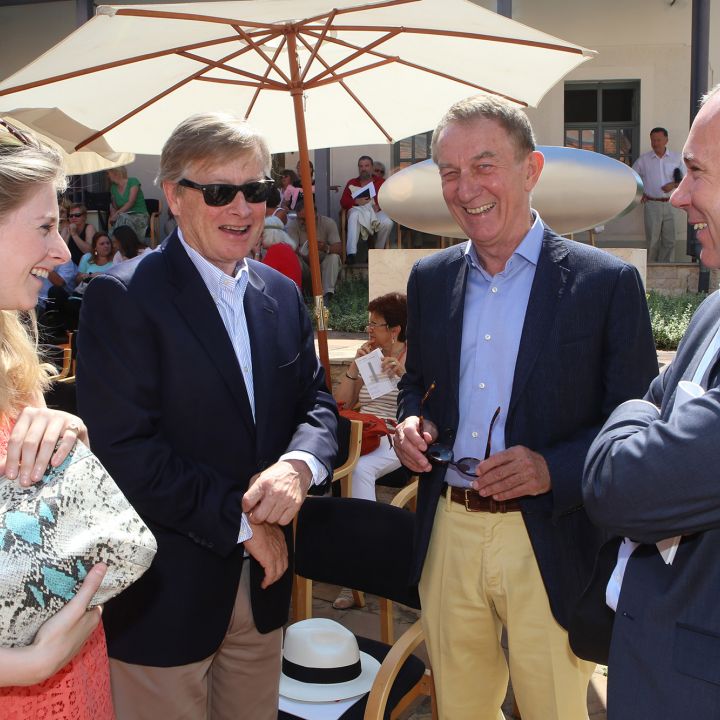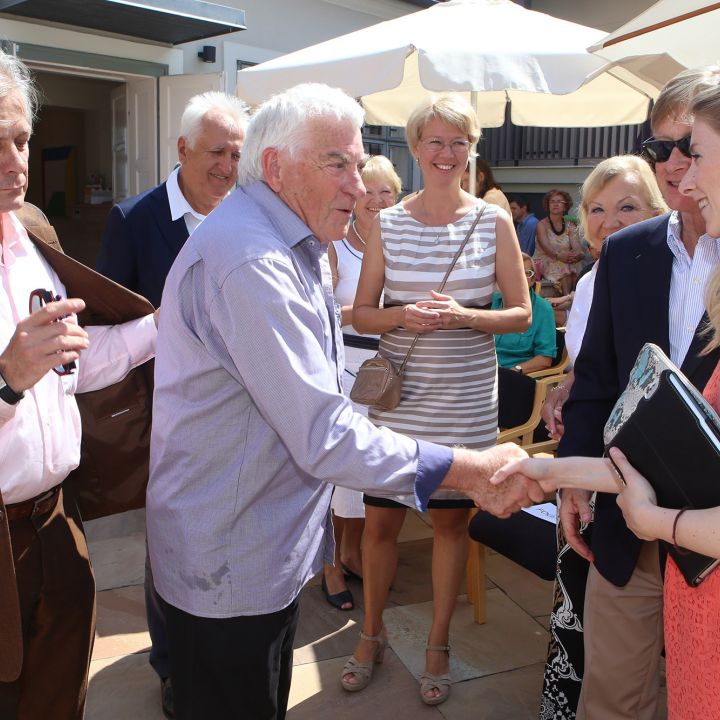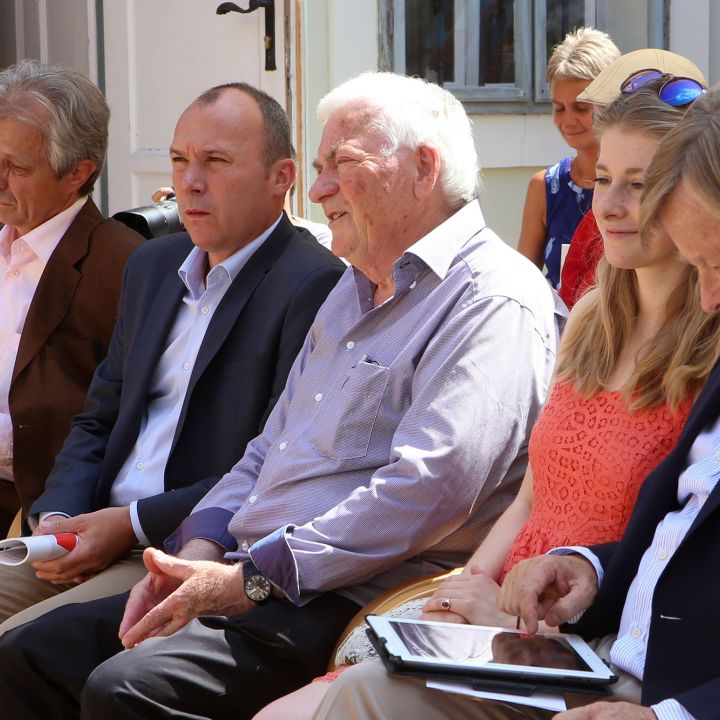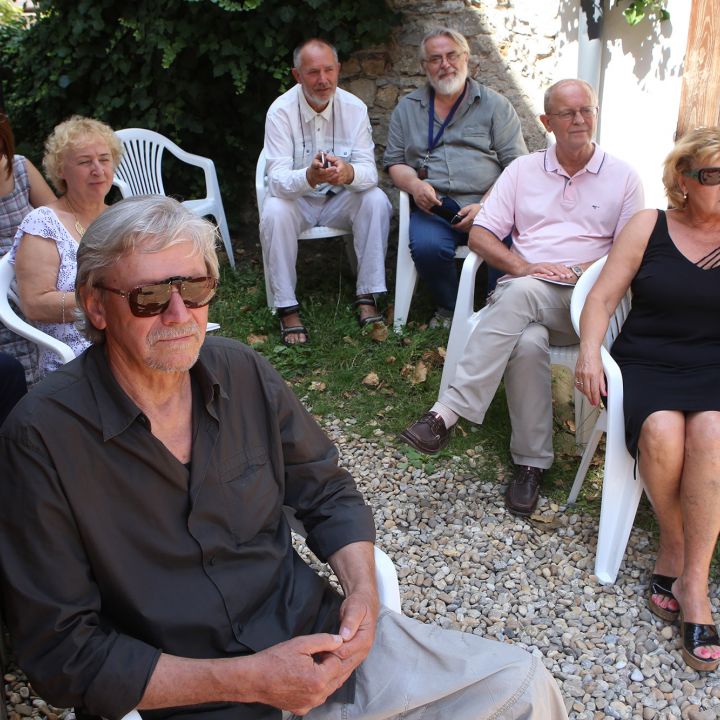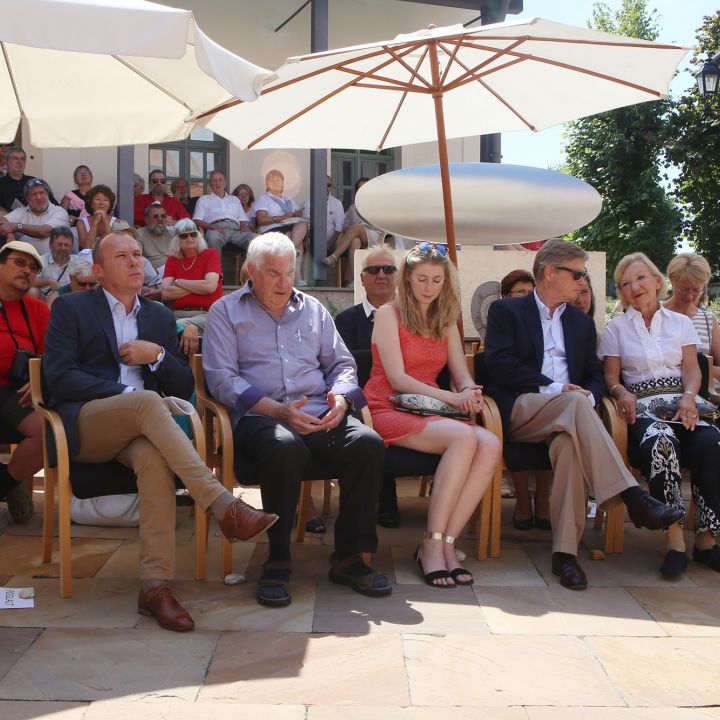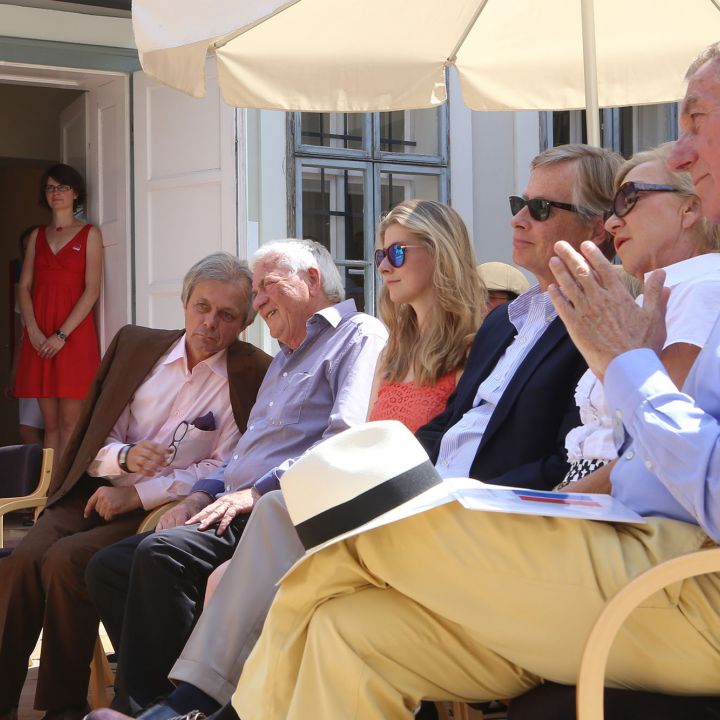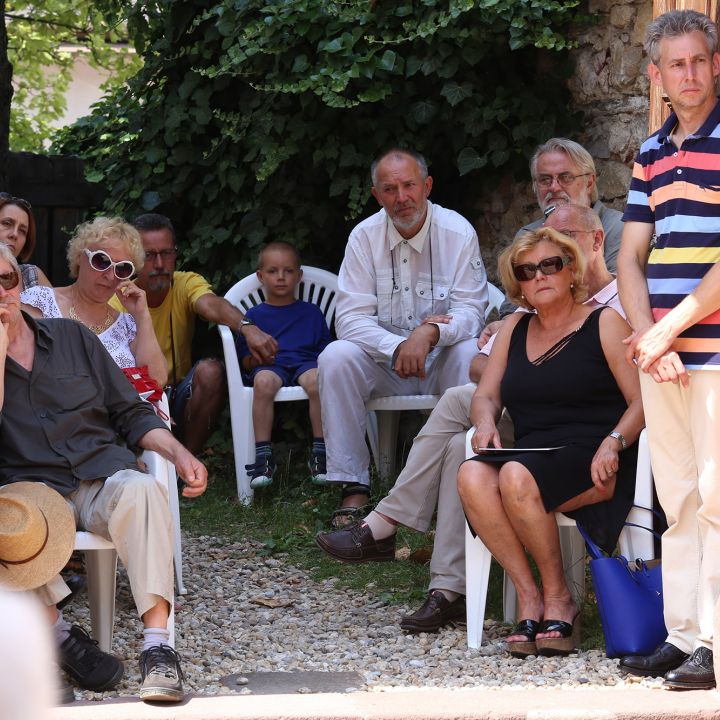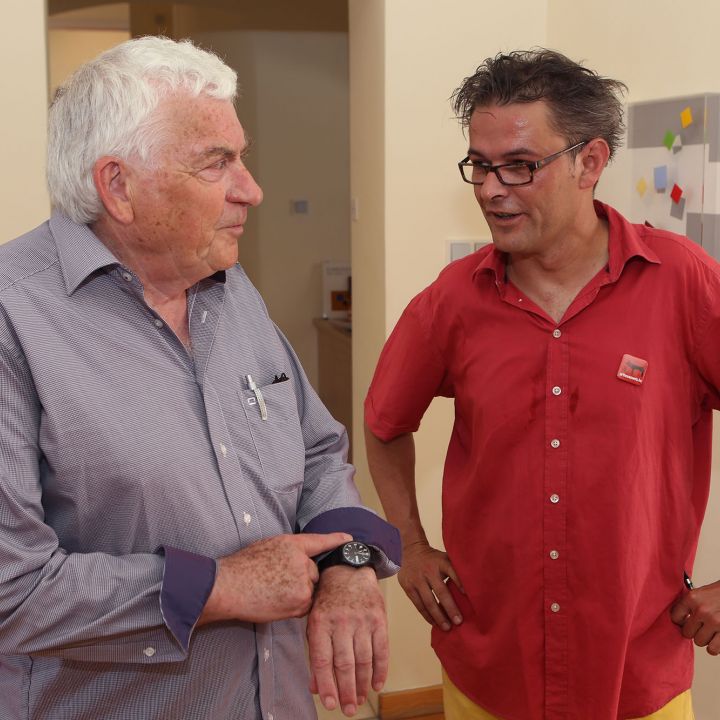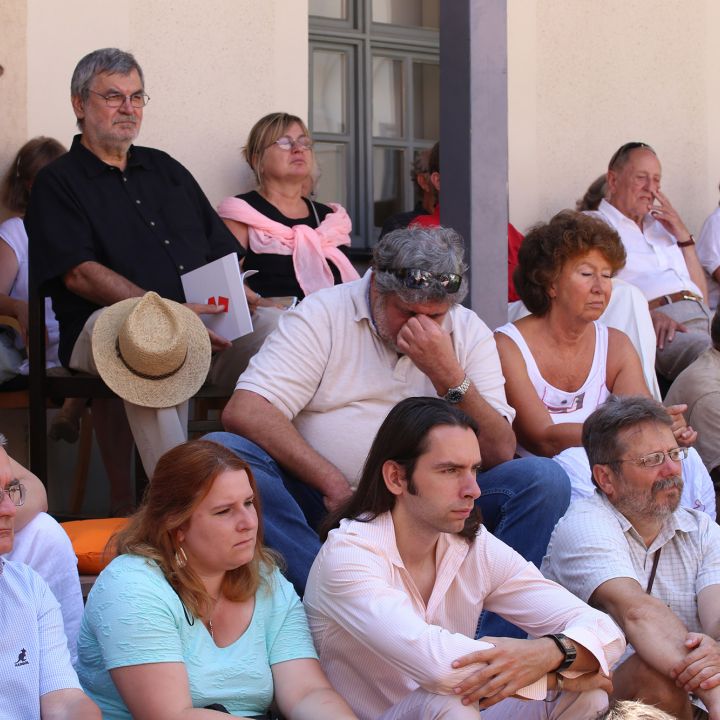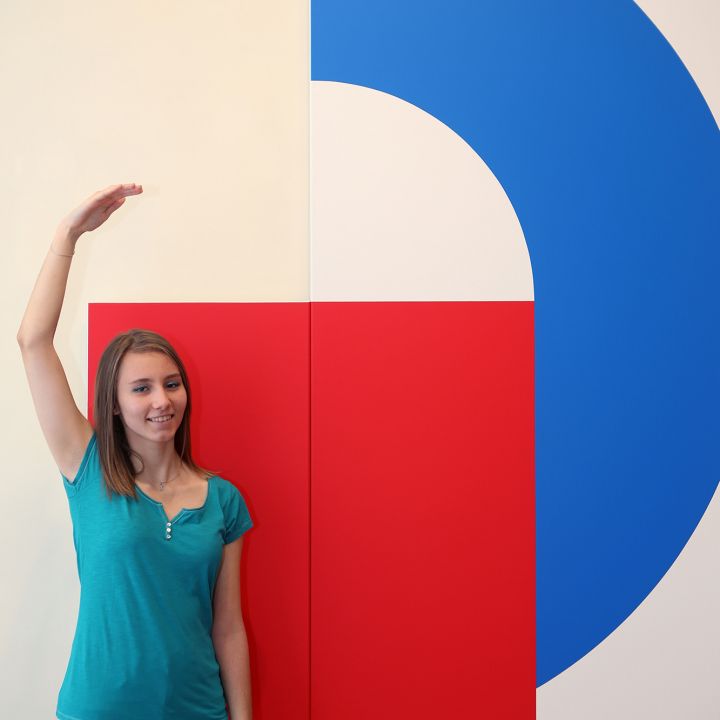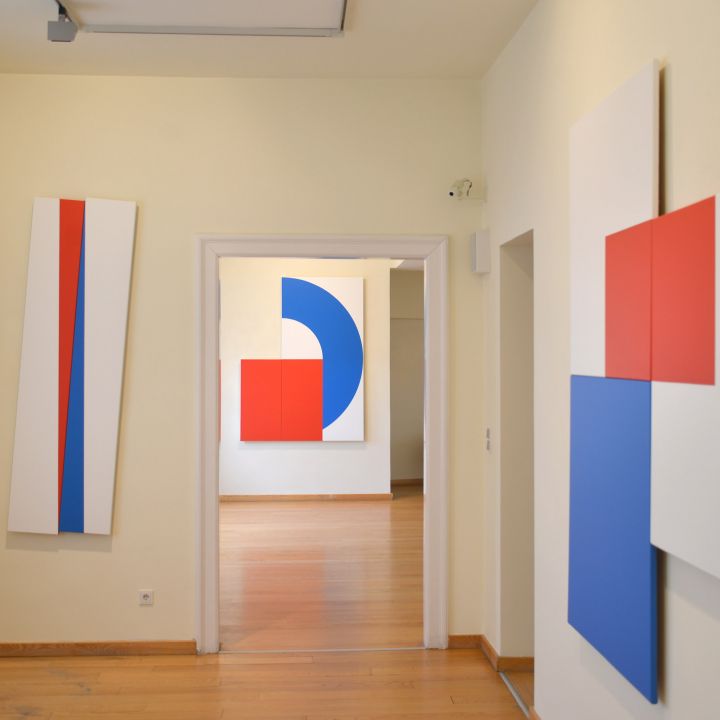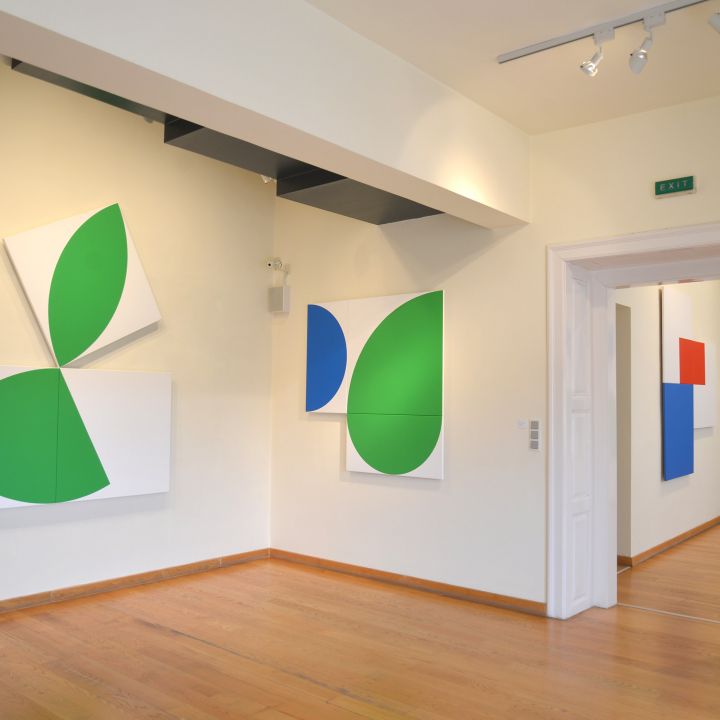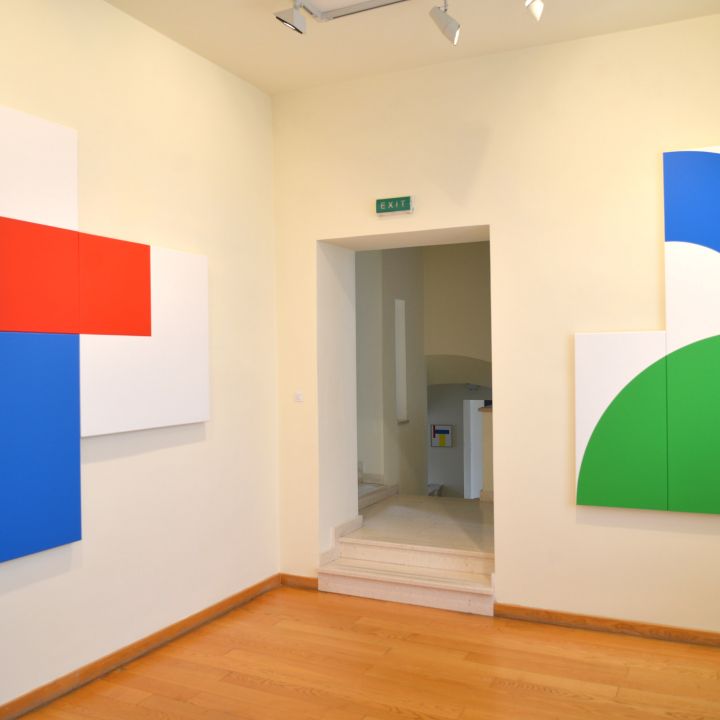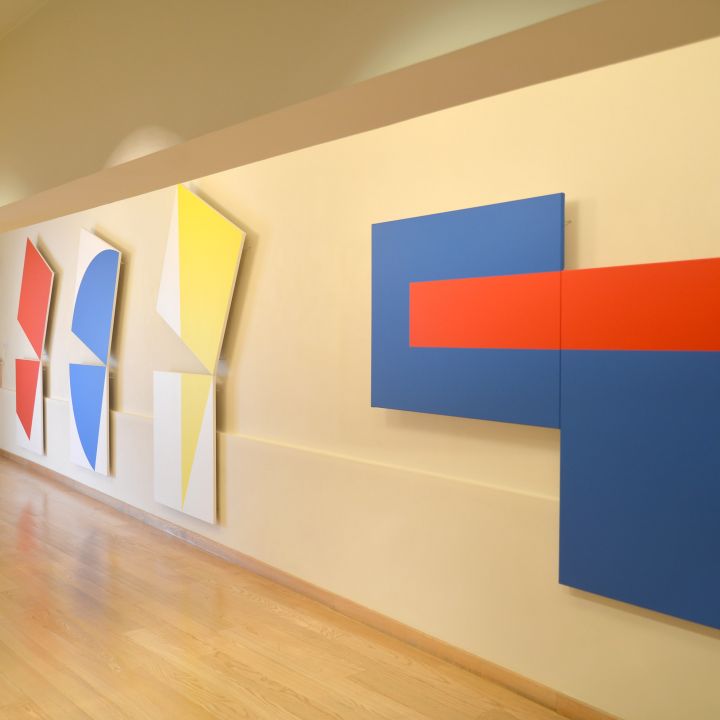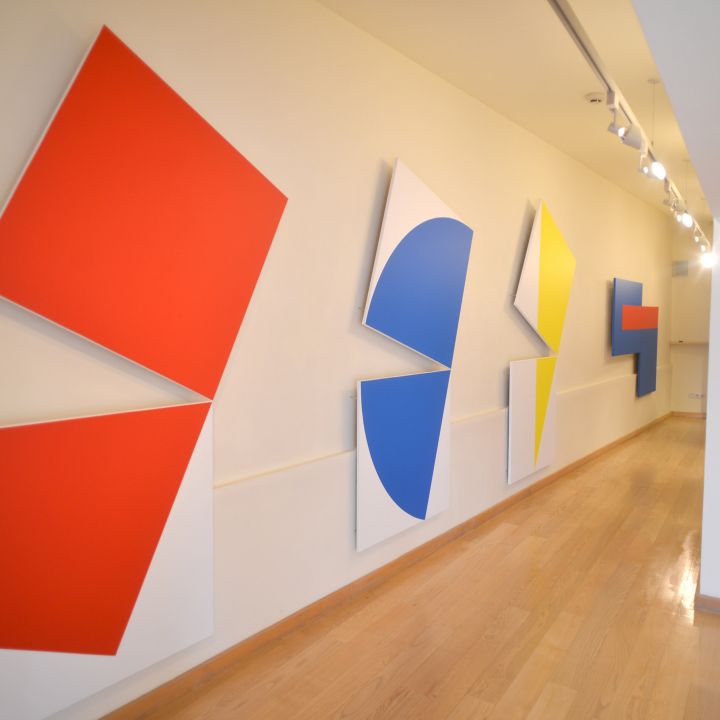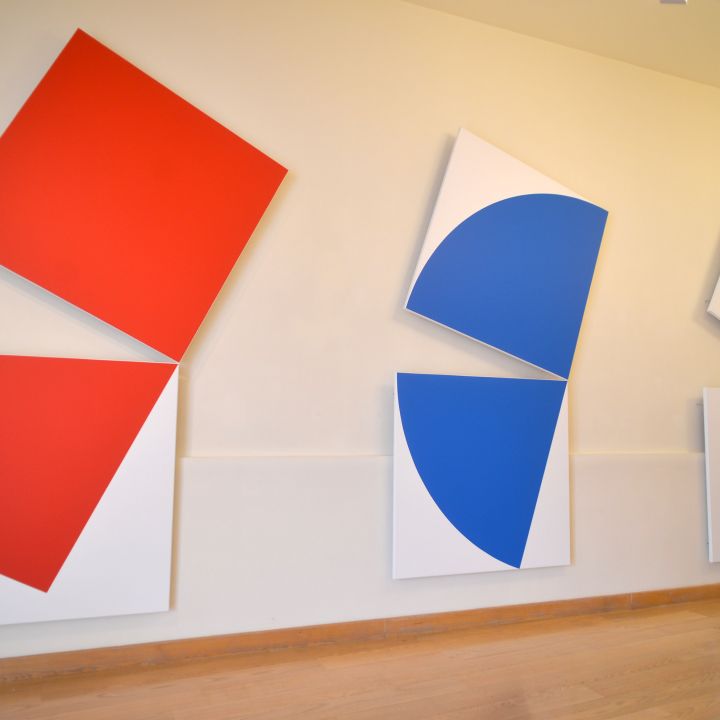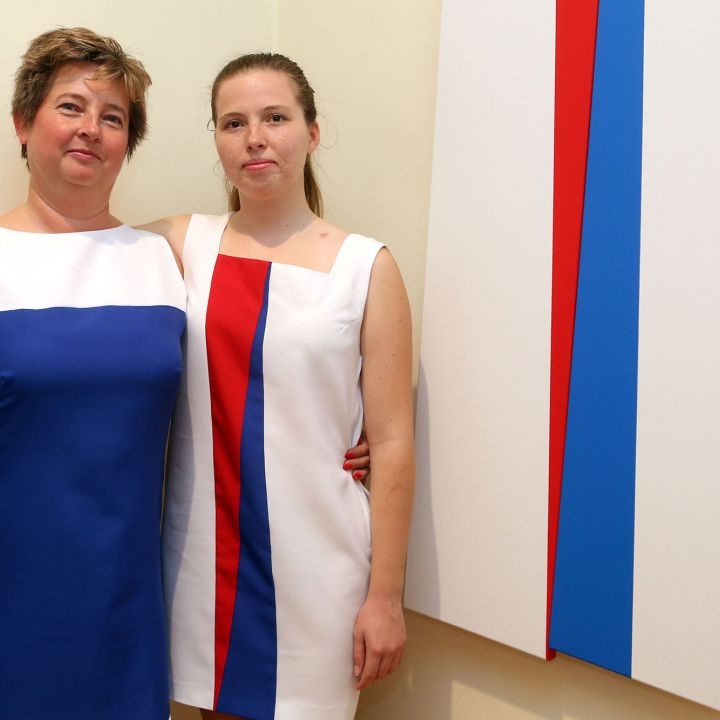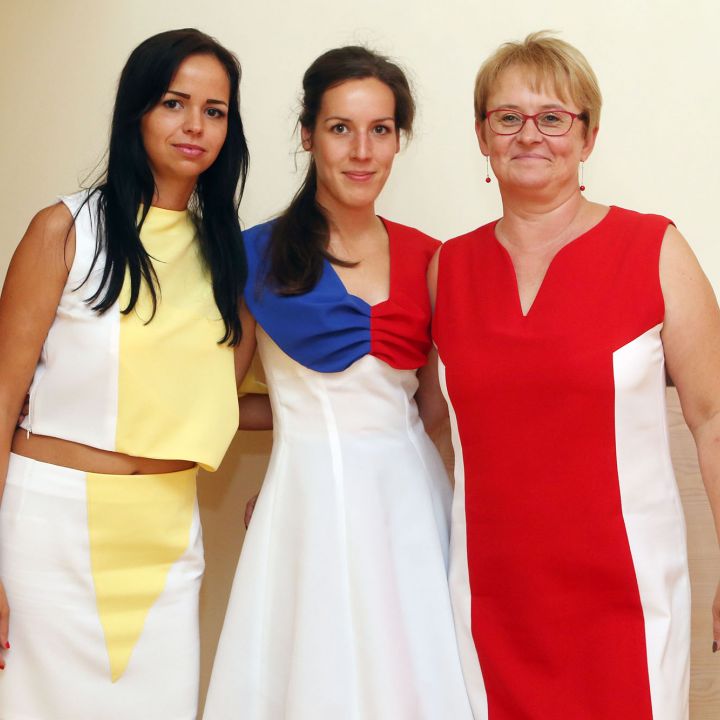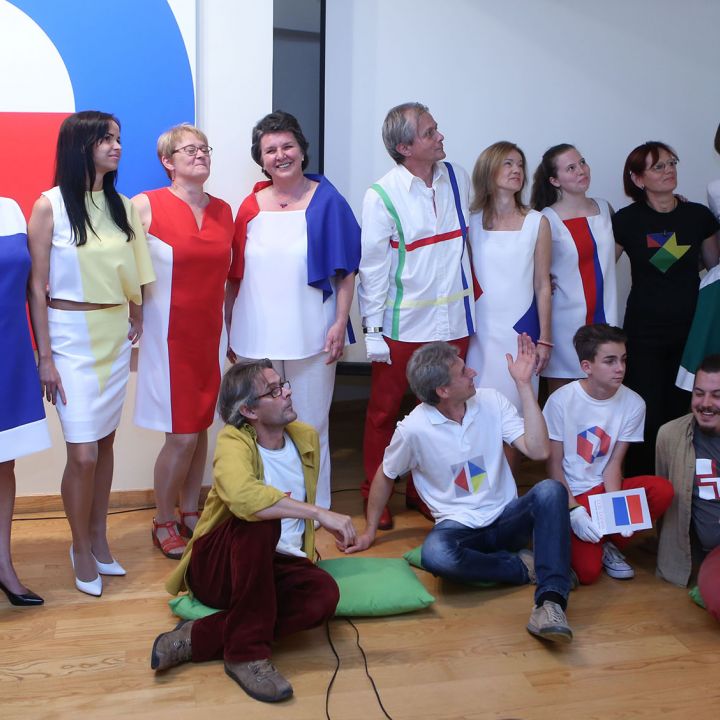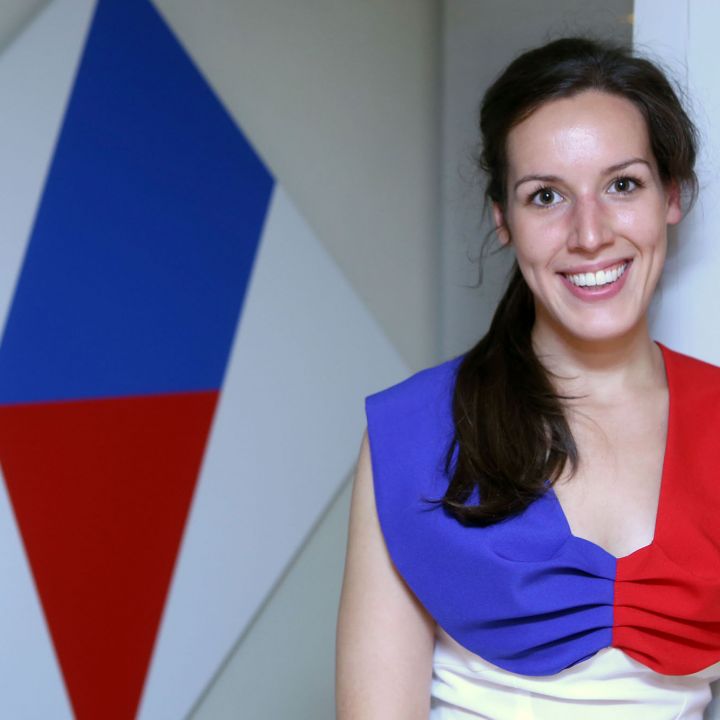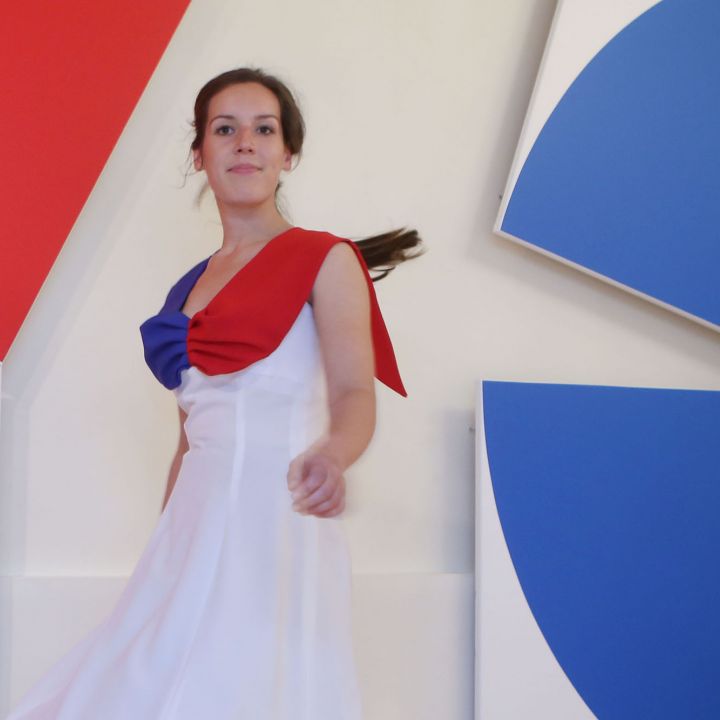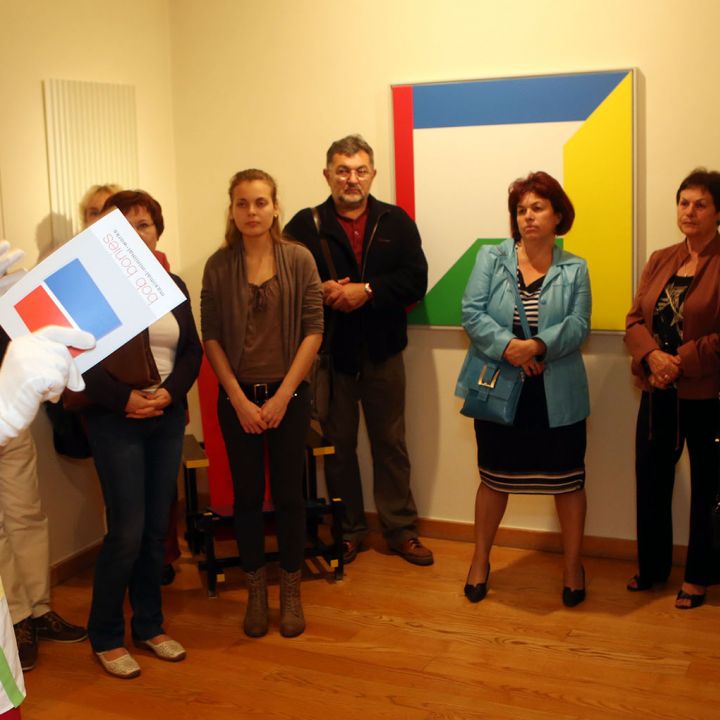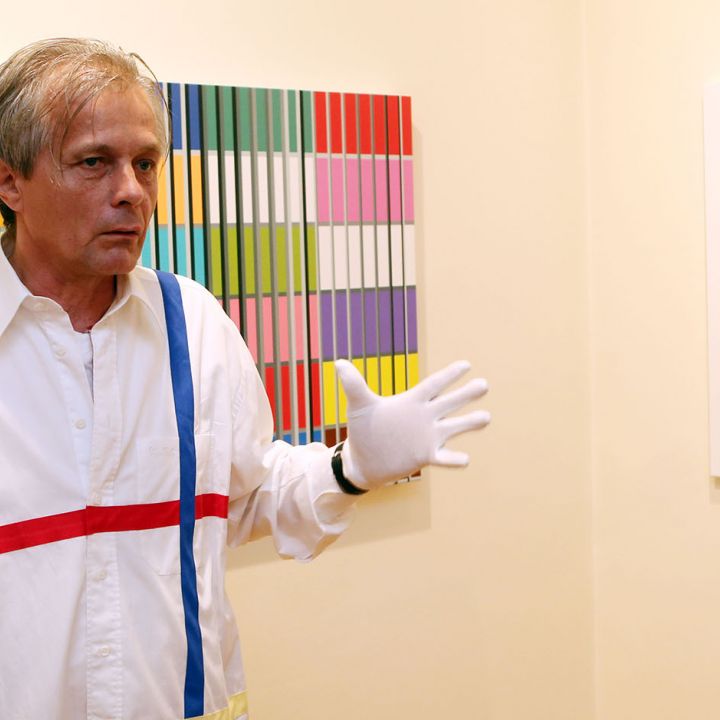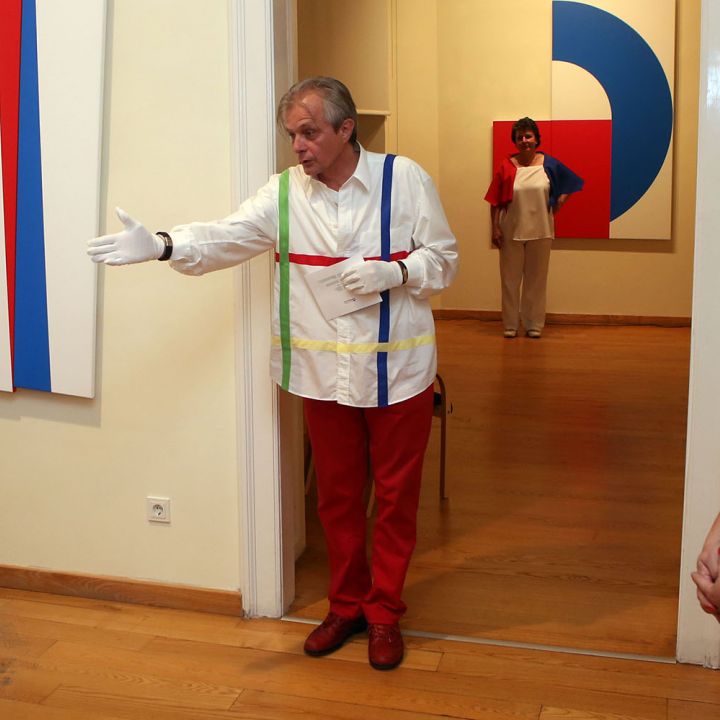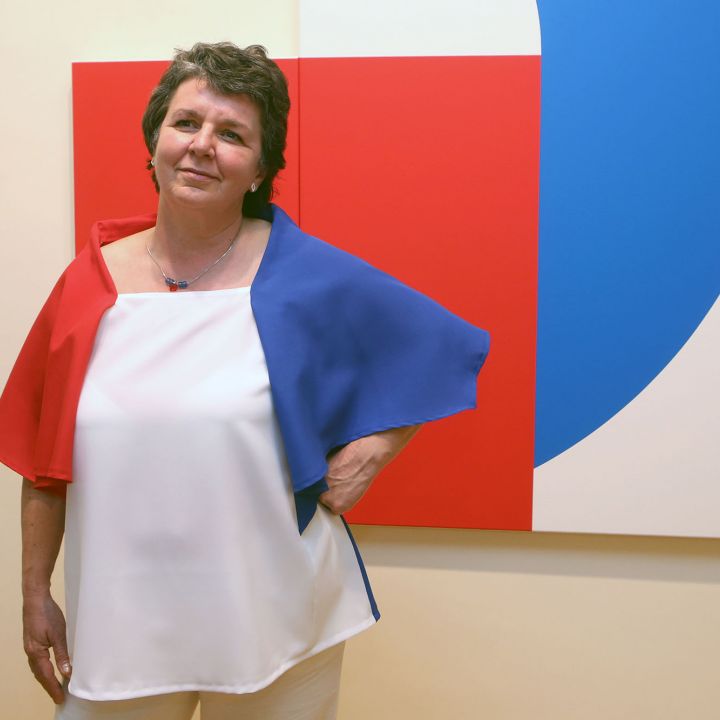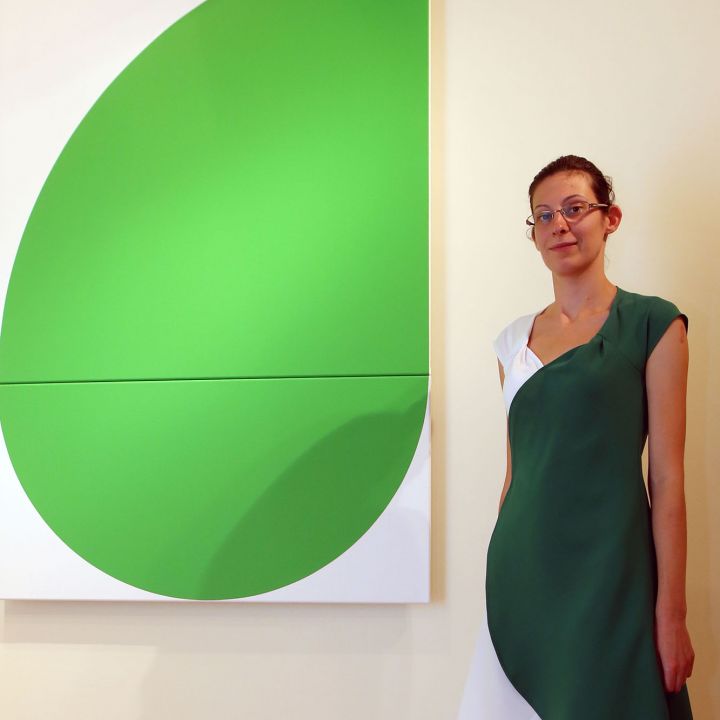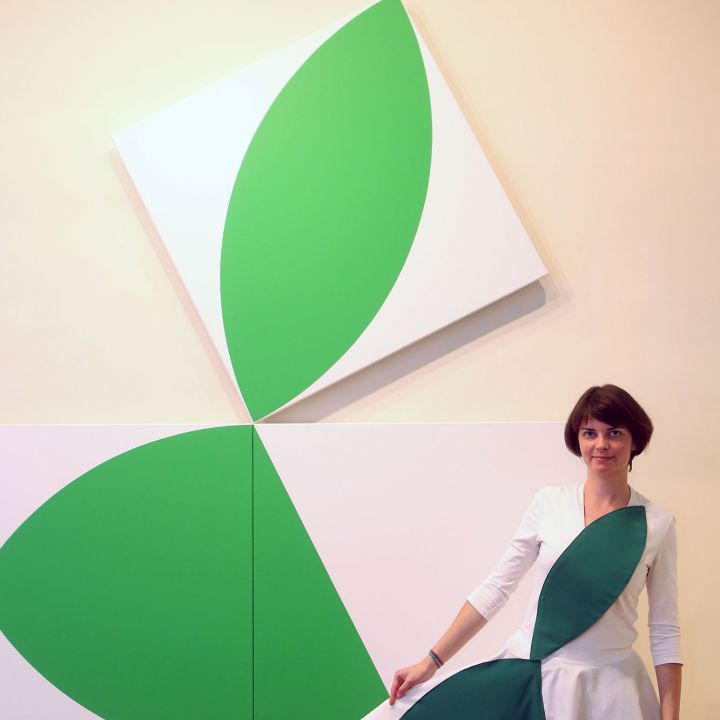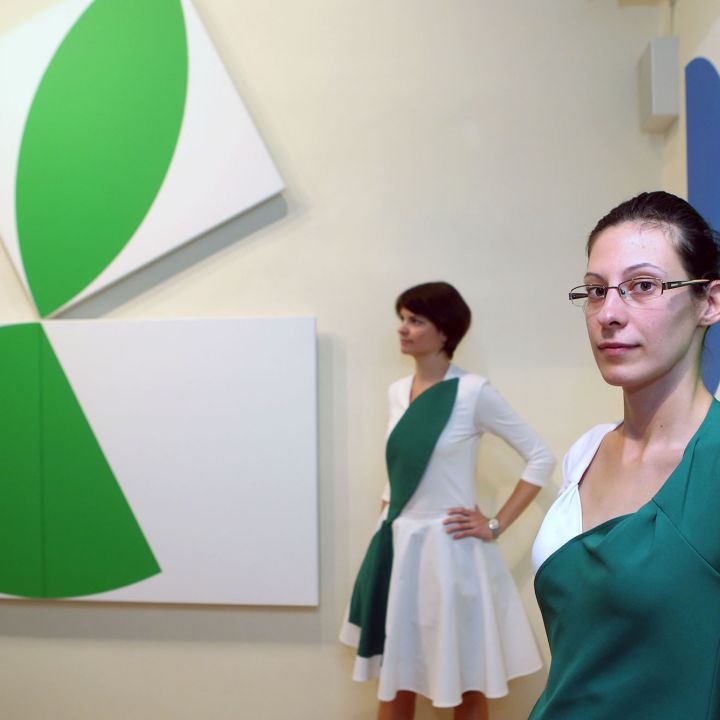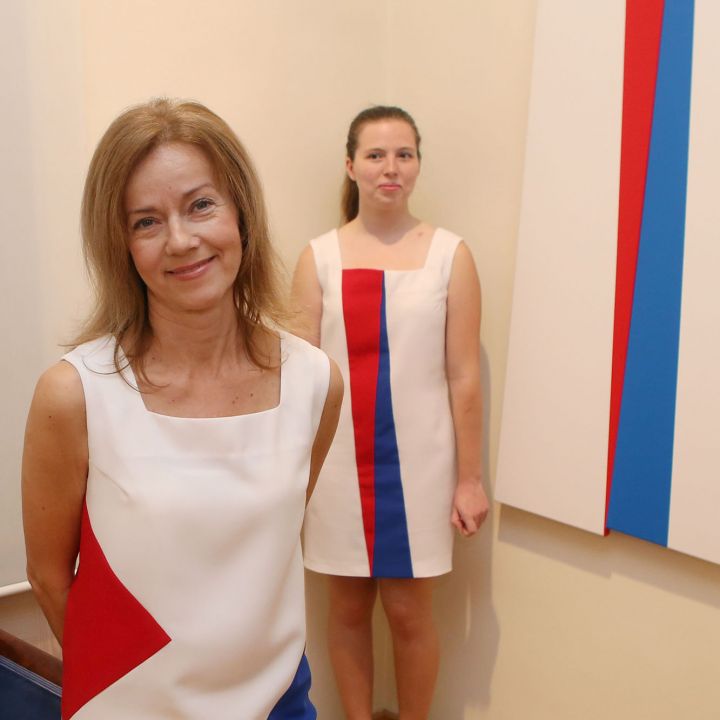Bob Bonies sees himself as the successor of the Dutch De Stijl movement founded in 1917, whose founding members included Mondrian, Theo Van Doesburg and the Hungarian-born Vilmos Huszár. His artistic method based on predefined principles and rules can also be traced back in part to the famous Constructivist group.
In addition to his formal style and artistic credentials Bob Bonies can also be seen as the heir to the De Stijl movement and following the universal artistic ambitions of his predecessors he is not only dedicated to painting, but also active in architecture and design.
Over the past four decades, Bonies' art has been characterised by the motto "Less is more": over the years he has gradually and consciously narrowed down his formal tools and colour palette. As an artist he has subjected himself to all kinds of rules and restrictions, searching for ways to simplify his creative method to the extreme without losing the power and tension inherent in his compositions. Accordingly for forty years he has used only four colours other than white: red, yellow, blue and green. In addition he uses simple geometric shapes (mainly squares and rectangles) presented in horizontal, vertical or diagonal arrangements. In recent years his art has been enriched by curved forms.
We have already seen some of the works of Dutch artist Bob Bonies in group exhibitions and thematic exhibitions in Hungary, presenting works with a constructive, geometric approach. Two of his important opuses can be found in the László Vass Collection. The aim of the House of Arts is to showcase both national and international excellence in geometric, concrete art in solo exhibitions at the Modern Gallery-László Vass Collection. For ten years we have been systematically building up an internationally renowned summer exhibition programme, where the Hungarian public and visitors to our country can get to know important masters. This is how after a long preparatory period we are organising Bob Bonies' exhibition in 2014.
Almost a hundred years ago Hungarian and Dutch artists of the time had an important relationship. From the point of view of art theory and art history the 21st century exhibition offers an exciting opportunity for comparison and interpretation of these links.

